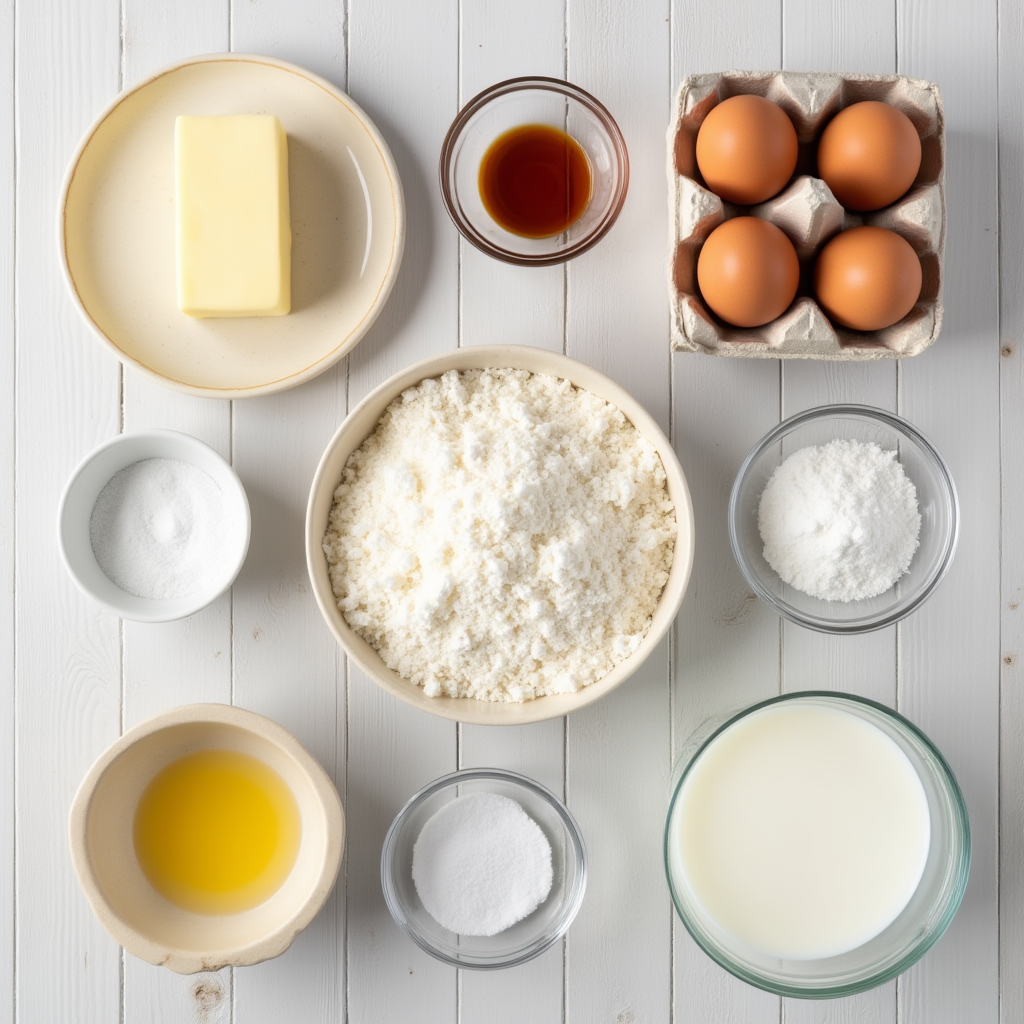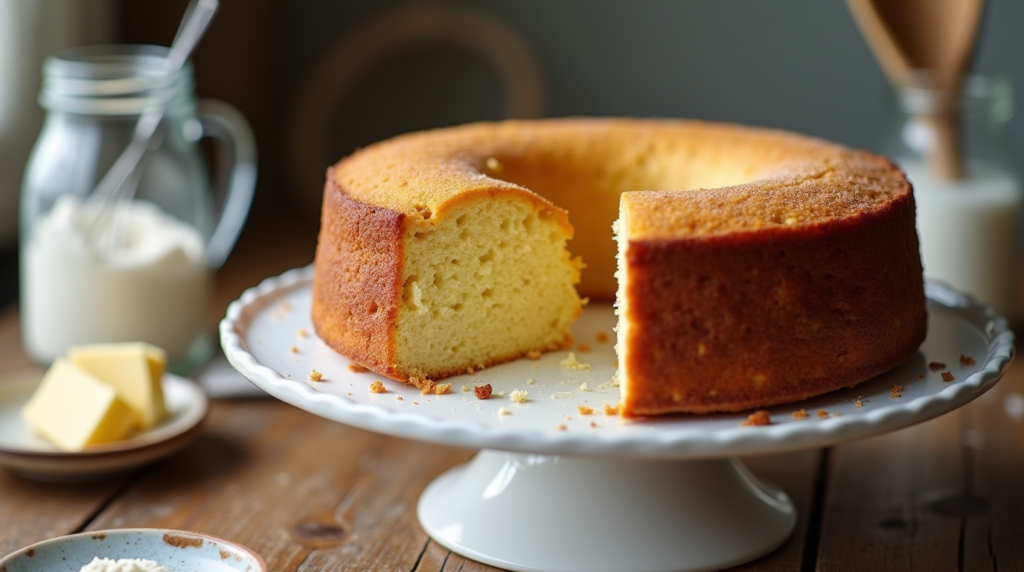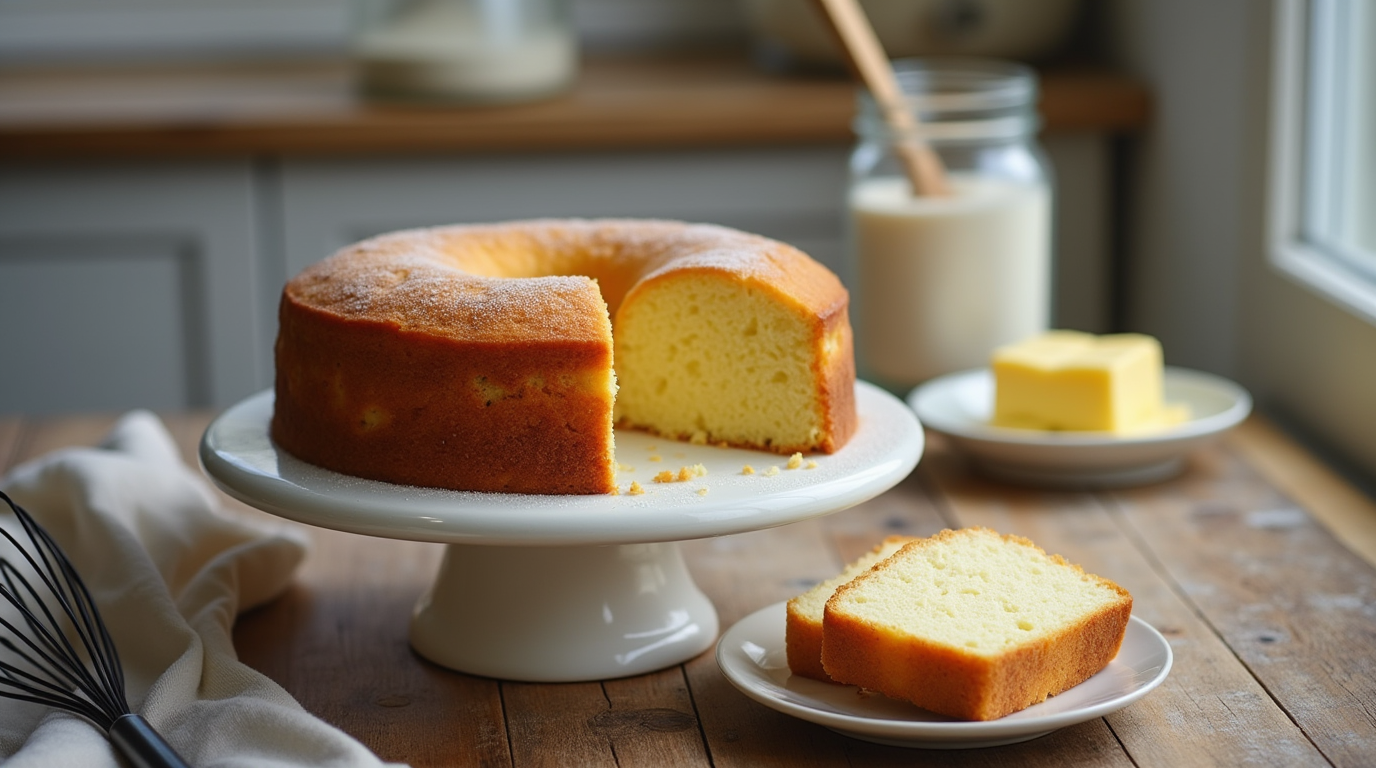Classic Buttermilk Pound Cake Recipe | Quick Dessert Recipe
Classic Buttermilk Pound Cake Recipe | Quick Dessert Recipe
Table of Contents
Introduction
Does the thought of a classic buttermilk pound cake bring back warm memories of family gatherings? How would you bake a pound cake that not only recaptures those memories but is also moist, flavorful, and perfectly textured?
If you’ve ever wondered this, you’re in the right place. Here’s how to make a classic buttermilk pound cake that’s moist and delicious, perfect not just for dessert but any time you have a craving for something sweet and satisfying. Pound cakes are the epitome of a versatile dessert—they can be served with fresh fruit, whipped cream, or just a sprinkle of powdered sugar. The secret to a perfect pound cake lies in simplicity, quality ingredients, and careful preparation.
Pound cakes have a rich history, having been made for hundreds of years. Originally, they included a pound each of butter, sugar, eggs, and flour, hence the name. Modern versions, like this buttermilk pound cake, maintain the rich, dense texture but lighten the crumb with buttermilk, which also adds a pleasant tang.
In this recipe, you’ll learn how to make a pound cake that is simultaneously light and rich, with a buttery flavor and tender crumb that will have your family and friends asking for seconds. The use of buttermilk in this recipe not only makes it moist but also gives it a slight tang that balances the sweetness.
So, preheat your oven and get ready to make an unforgettable dessert.
Ingredients

Here’s what you’ll need:
- Butter: 1 cup (2 sticks; 227g) unsalted butter, softened to room temperature. This is the foundation of the pound cake, giving it its rich, buttery flavor and moisture. For a lighter option, you can substitute some of the butter with equal parts unsweetened applesauce, but this may alter the texture slightly.
- Sugar: 2 cups (400g) granulated sugar. This not only sweetens the cake but helps create a soft, tender crumb.
- Eggs: 4 large eggs, at room temperature. They provide structure and richness. Make sure to use room-temperature eggs; they blend better into the batter, resulting in a smoother cake.
- Vanilla Extract: 2 teaspoons (10mL) pure vanilla extract. Use high-quality vanilla for the best flavor. It can also be enhanced with a hint of other extracts, like almond or lemon.
- Cake Flour: 3 cups (360g) cake flour (measured correctly—spoon and level). Cake flour is lighter than all-purpose flour, and it helps create a fine, tender crumb. If you don’t have cake flour, you can make a substitute by measuring 1 cup of all-purpose flour, removing 2 tablespoons of it, and replacing it with 2 tablespoons of cornstarch.
- Baking Powder: 1 teaspoon (4g) baking powder. It provides an extra bit of lift, helping the cake rise and become light. If you prefer not to use baking powder, you can omit it, but your cake will be denser.
- Baking Soda: 1/2 teaspoon (2g) baking soda. The acidic buttermilk activates the baking soda, helping the cake rise. Make sure it’s fresh for best results.
- Salt: 1/2 teaspoon (3g) fine sea salt. Flavor enhancer and essential for a well-balanced cake.
- Buttermilk: 1 cup (240mL) buttermilk, at room temperature. This is the star ingredient! The acidity in buttermilk tenderizes the gluten, resulting in a soft and moist crumb. If you don’t have buttermilk, you can make a substitute by adding 1 tablespoon of vinegar or lemon juice to 1 cup of milk. Let it stand for 5-10 minutes before using.
Preparation and Baking Time
- Preparation time: 20 minutes
- Baking time: 60–70 minutes (or until a skewer inserted into the center comes out clean).
- Cooling time: 2-3 hours (to allow the cake to cool fully)
- Total time: Approximately 3.5 hours.
Compared to the average pound cake recipe, this recipe requires a bit more baking time (about 10 minutes), but trust me, it’s worth it! The result is a cake that’s evenly baked, with no soggy spots.
Step-by-Step Instructions
Preheat Oven and Prepare the Pan:
- Preheat your oven to 350°F (175°C).
- Grease a 10-inch (12-cup capacity) bundt pan with butter or nonstick spray, ensuring all crevices are covered. Dust with flour and tap out any excess.
Cream the Butter and Sugar:
- In a large bowl with an electric mixer (stand mixer or handheld), beat the softened butter and sugar together on medium-high speed until light and fluffy (about 4–5 minutes). Be patient here—this step is crucial for incorporating air into the batter, which helps the cake rise. The mixture should be pale in color.
Add the Eggs and Vanilla:
- Incorporate the eggs one at a time, mixing thoroughly after adding each one. • Add the vanilla extract when you mix in the last egg… • Use a spatula to scrape the sides of the bowl to make sure everything blends evenly.
Combine Dry Ingredients:
- In another bowl, combine the flour, baking powder, baking soda, and salt by whisking them together.
Mix the Batter:
- Add the dry ingredients to the wet ingredients in 3 parts, alternating with the buttermilk in 2 parts. Begin and end with the dry ingredients. Mix on low speed until just combined. For example, mix in 1/3 of the flour mixture, then 1/2 of the buttermilk, another 1/3 flour, the remaining buttermilk, and the last of the flour. Don’t overmix; batter should be smooth but may be a little thick.
Pour and Bake:
- Transfer the batter to the greased pan and use a spatula to level the top.
- Bake on the center rack for 60–70 minutes. Test for doneness by inserting a long skewer or toothpick into the center of the cake—it should come out clean. If it’s wet, bake for another 5–10 minutes and test again.
- If the top is browning too quickly, cover loosely with aluminum foil to prevent burning while the inside continues to bake.
Cool and Serve:
- Let the cake cool in the pan for 15 minutes, then invert it onto a cooling rack and let cool completely.
- Once cool, dust with powdered sugar or serve with whipped cream and berries.

Nutritional Information (per serving, based on 12 slices)
- Calories: 420 kcal
- Carbohydrates: 56g
- Protein: 6g
- Fat: 19.5g
- Saturated Fat: 11.5g
- Cholesterol: 110mg
- Sodium: 200mg
- Potassium: 86mg
- Fiber: 0.5g
- Sugar: 34g
- Vitamin A: 615IU
- Calcium: 55mg
- Iron: 0.6mg
This recipe is rich in carbohydrates and fats, making it a great energy source, but portion control is important. If you’re looking for a lower-calorie alternative, check out the healthier variations below.
Healthier Alternatives for the Recipe
Looking to make your buttermilk pound cake a bit healthier? Here are some options:
- Butter Substitute: Replace half the butter with unsweetened applesauce or mashed banana to reduce saturated fat and calories.
- Sugar Reduction: Reduce the sugar by 1/4 cup (50g) and add 1 teaspoon of a natural sweetener like stevia or monk fruit to maintain sweetness without the calories.
- Egg Whites: Use 2 whole eggs and 2 egg whites to reduce cholesterol and fat.
- Low-Fat Buttermilk: Use low-fat buttermilk to reduce saturated fat.
- Wheat Flour: Substitute half the cake flour with whole wheat pastry flour for added fiber and nutrients. This will make the cake slightly denser but healthier.
Serving Suggestions
Buttermilk pound cake is like a blank canvas—it can be dressed up or down! Here are some ideas:
- Fresh Fruit: Serve slices with a side of fresh berries, sliced peaches, or a fruit compote.
- Whipped Cream: A dollop of whipped cream or a scoop of vanilla ice cream complements the richness of the cake.
- Glaze: Drizzle with a simple lemon glaze (powdered sugar + lemon juice) or chocolate ganache.
- Caramel Sauce: A drizzle of salted caramel adds a delicious twist.
Common Mistakes to Avoid
- Cold Ingredients: Make sure your butter, eggs, and buttermilk are at room temperature to ensure smooth blending.
- Overmixing: Mix batter just until the ingredients are combined. Overmixing leads to a tough cake.
- Opening the Oven Too Soon: The cake needs time to set. Don’t open the oven door until the last 10 minutes of baking.
- Improper Cooling: Allow the cake to cool in the pan for 15 minutes before inverting. Removing it too soon can cause it to break.
- Wet Bundt Pan: Make sure the pan is well-greased and floured to prevent sticking. Wipe any condensation before adding the batter.
Storing Tips for the Buttermilk pound cake
To keep your pound cake fresh:
- Room Temperature: Wrap it tightly in plastic wrap or store in an airtight container for up to 3 days.
- Refrigerator: For up to a week, but bring to room temperature before serving for the best texture.
- Freezer: Pound cake freezes well! Wrap individual slices or the whole cake in plastic wrap, then aluminum foil, and freeze for up to 3 months. Thaw at room temperature.
Conclusion
This classic buttermilk pound cake is the perfect dessert to make for any occasion. It’s moist, tender, and buttery—every bite is a delight. With simple ingredients and straightforward steps, you can master this recipe in no time!
We’d love to hear from you! Try the recipe and share your thoughts in the comments below, or tag us in your pound cake photos on social media. Don’t forget to check out our other baking recipes for more inspiration.
FAQs
Q1: Can I use all-purpose flour instead of cake flour?
Yes, but the texture will be slightly denser. To mimic cake flour, use the substitution method mentioned in the ingredients section.
Q2: What can I use if I don’t have buttermilk?
Add 1 tablespoon of vinegar or lemon juice to 1 cup of milk and let it sit for 5-10 minutes until it curdles slightly.
Q3: Can I add flavors to this pound cake?
Absolutely! Try adding lemon zest, almond extract, or even a swirl of raspberry jam to the batter for variations.
Q4: Why is my pound cake dry or tough?
Overmixing the batter or overbaking can lead to a dry cake. Ensure ingredients are at room temperature and follow the mixing instructions carefully.
Q5: How can I prevent my pound cake from sticking to the bundt pan?
Grease and flour the pan thoroughly, including all the nooks and crannies. Using a baking spray with flour can also help.
Did you try this Recipe ?
There are no reviews yet. Be the first one to write one.

